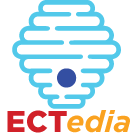Cognitive Theory of Multimedia Learning
Overview
The Cognitive Theory of Multimedia Learning (CTML) aims to understand how to use words and pictures to improve human learning. The theory builds on the multimedia principle, which suggests that people learn better from words and pictures than from words alone.
CTML postulates that multimedia instructional messages designed with the understanding of how the human mind works are more likely to lead to meaningful learning than those that do not take this into account. CTML is inspired by Sweller's Cognitive Load Theory, which focuses on managing cognitive load for learners to understand complex material.
CTML also considers factors such as the learner's prior knowledge, motivation and learning characteristics when designing effective multimedia instructional materials.
Three Assumptions
Traditional common-sensical perceptions about learning assume that learners possess a single-channel, unlimited capacity and passive processing system. However, CTML takes into consideration current research (Fiorella & Mayer, 2015; Mayer, 2011, 2021). The three assumptions by CTML are:
| Dual Channel | Limited Capacity | Active Processing |
|---|---|---|
| Humans process visual and auditory information from separate channels. | Limited information can be processed in each channel at one time. | Active learning by attending to relevant incoming information, organizing selected information into coherent mental representation, integrating mental representation with other knowledge. |
Dual Channel
The Dual Channel assumption posits that humans have two different ways of processing information. One channel processes visual/ spatial information like illustrations, animations, videos or texts. The other channel processes information in the form of auditory/ non-verbal sounds. Baddeley's model of working memory[1] and Paivio’s dual coding theory [2] have influenced this assumption.
Approaches for information processing
There are two approaches to understand how information is processed in the two channels:
| Representation mode | Sensory mode |
|---|---|
| This approach evaluates if the information presented is verbal (spoken or printed) or non-verbal. According to this approach, one channel processes verbal material while the other processes visual material and non-verbal sounds. | This approach focuses on whether learners initially process the presented material through their eyes (like pictures, video, animation, or printed words) or ears (like for spoken words or background sounds). This means that one channel processes visually represented material while the other processes auditorily represented material. |
The CTML uses the sensory mode approach in its theory.
Important to Paivio’s dual-coding theory [3] is the idea of cross-channel representations. It refers to the learner’s ability to take information presented in one form (visual or auditory) and convert it to the other form after mentally processing it.
Limited Capacity
The idea of limited capacity makes it essential to measure the cognitive information-processing capacity of an individual. On average, while chunking, the human mind can retain 4-7 chunks of information in the working memory during information processing.
The limited capacity of processing information helps make decisions about which pieces of information to focus on, the connection between them and the connection to prior knowledge. The central executive controls the allocation of central resources [4], and metacognition strategies help allocate, monitor, coordinate and adjust limited cognitive resources.
Active Processing
Active processing is when a learner uses cognitive resources to make sense of incoming information by making sense and building a mental model of it. While structuring incoming knowledge, the learner uses process, comparison, generalization, enumeration and classification as knowledge structures. [5] In designing multimedia instructional material, it thus becomes essential to provide coherent structure and guidance on building knowledge structures for the learner to make sense of the materials.
| Knowledge Structure | Description |
|---|---|
| Process | Cause-and-effect chains and consist of explanations of how some system works |
| Comparison | Represented as matrices and consist of comparisons among two or more elements along several dimensions |
| Generalisation | Represented as a branching tree and consists of a main idea with subordinate supporting details. |
| Enumeration | Represented as lists and consist of a collection of items. |
| Classification | Represented as hierarchies and consist of sets and subsets |
Design Implications
Challenges
References
- ↑ Baddeley, A. D. (1999). Human Memory. Boston, MA: Allyn & Bacon
- ↑ Clark, J. M., & Paivio, A. (1991). Dual coding theory and education. Educational Psychology Review, 3(3), 149–210.
- ↑ Paivio, A. (1986). Mental Representations: A Dual Coding Approach. New York: Oxford University Press
- ↑ Baddeley, A. D. (1999). Human Memory. Boston,MA: Allyn & Bacon.
- ↑ Chambliss, M. J., & Calfee, R. C. (1998). Textbooks for Learning. Oxford: Blackwell.
